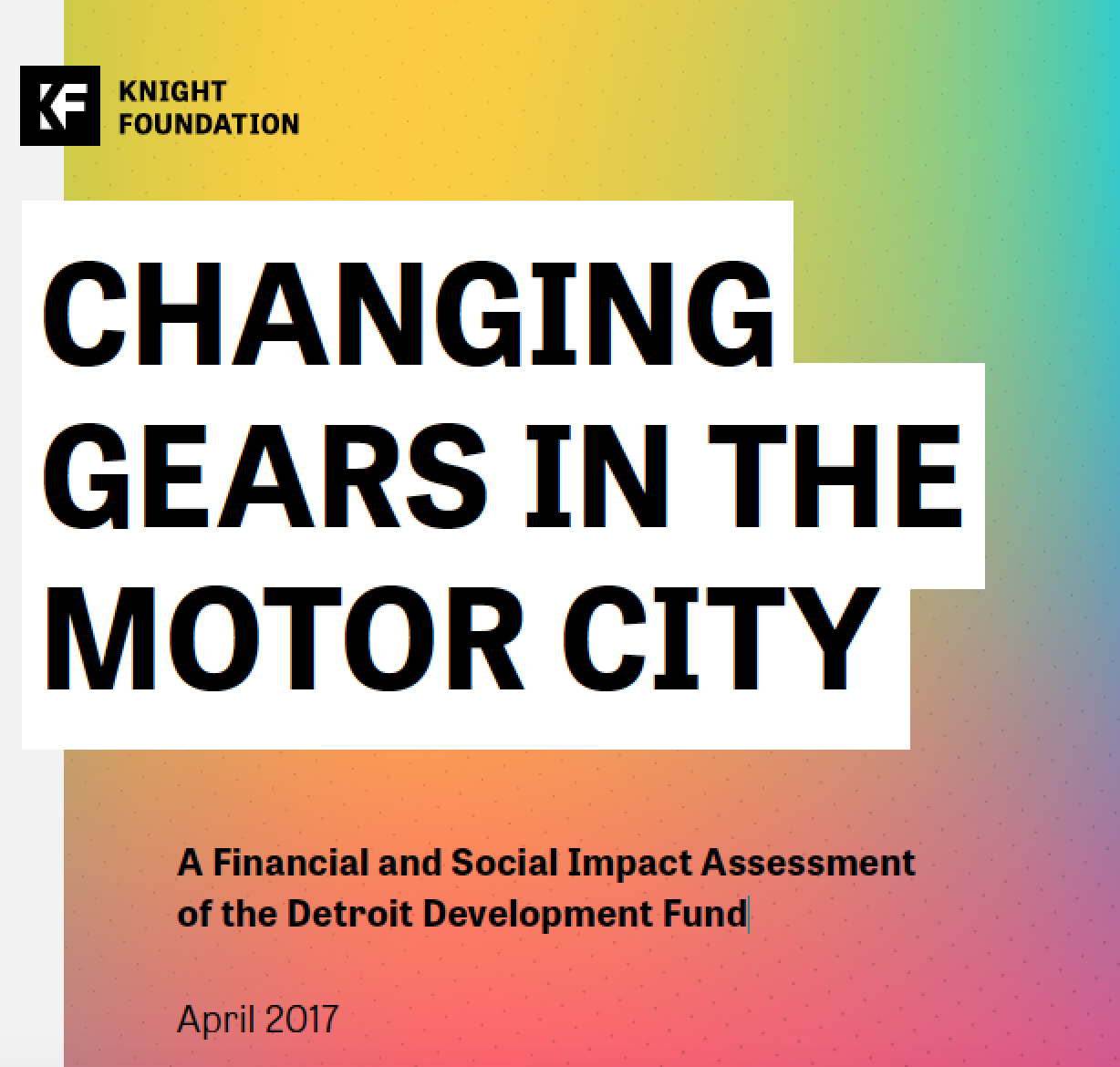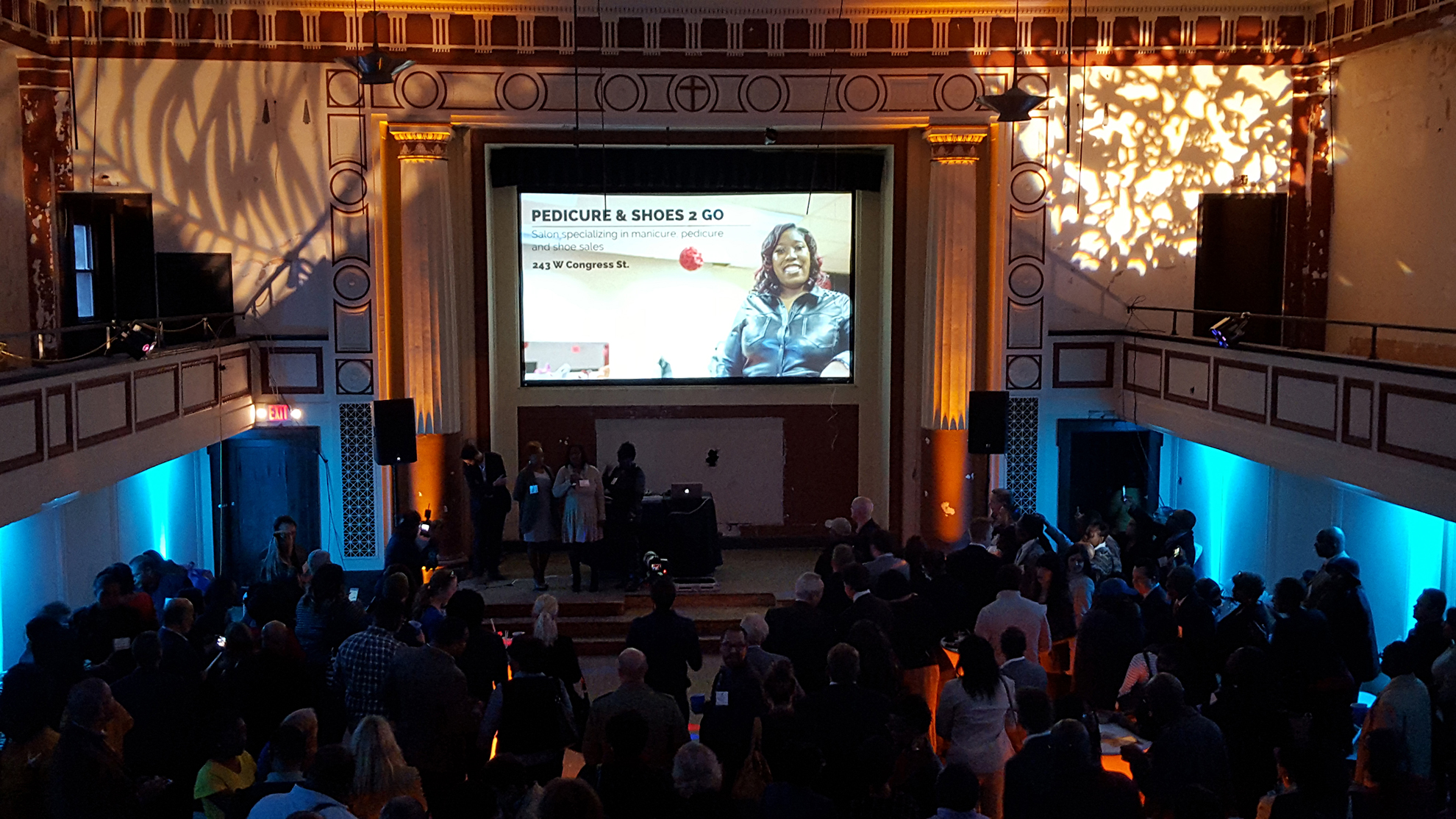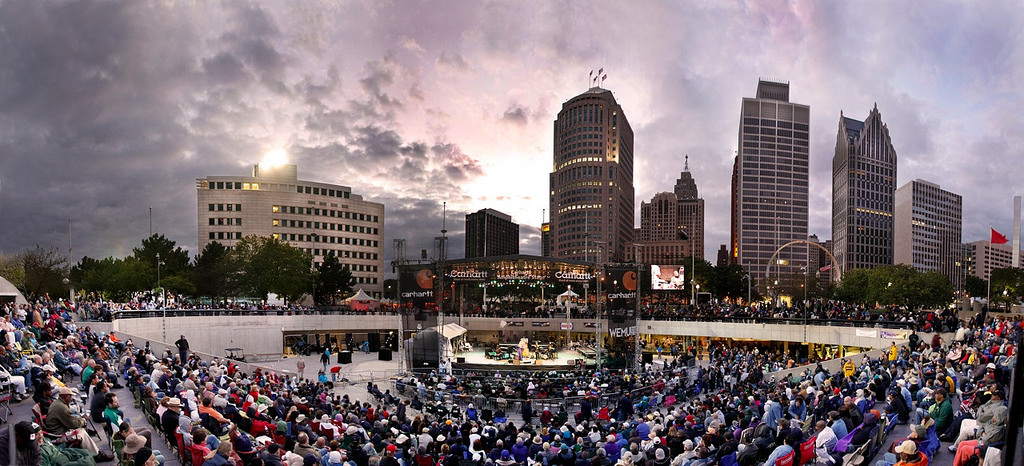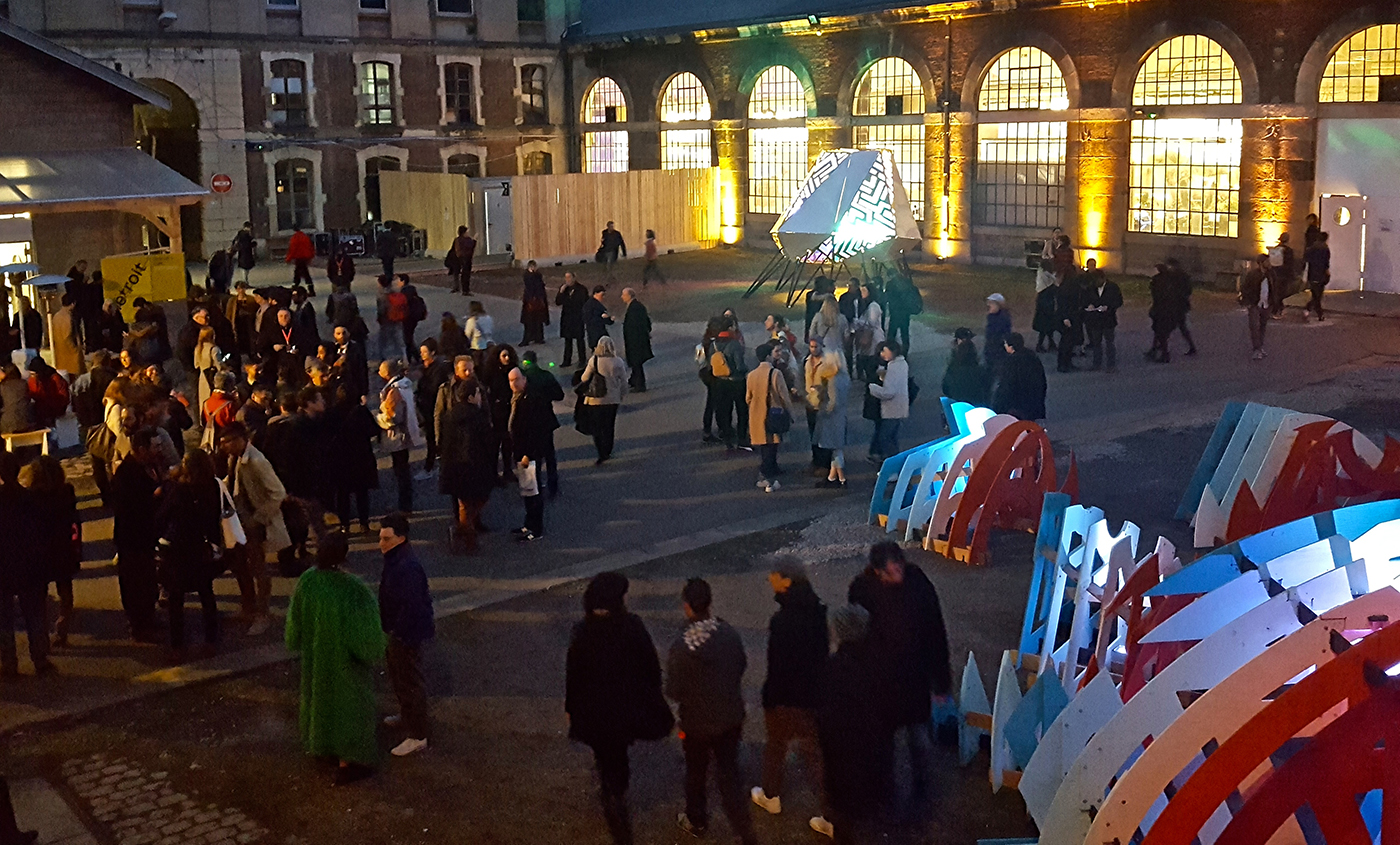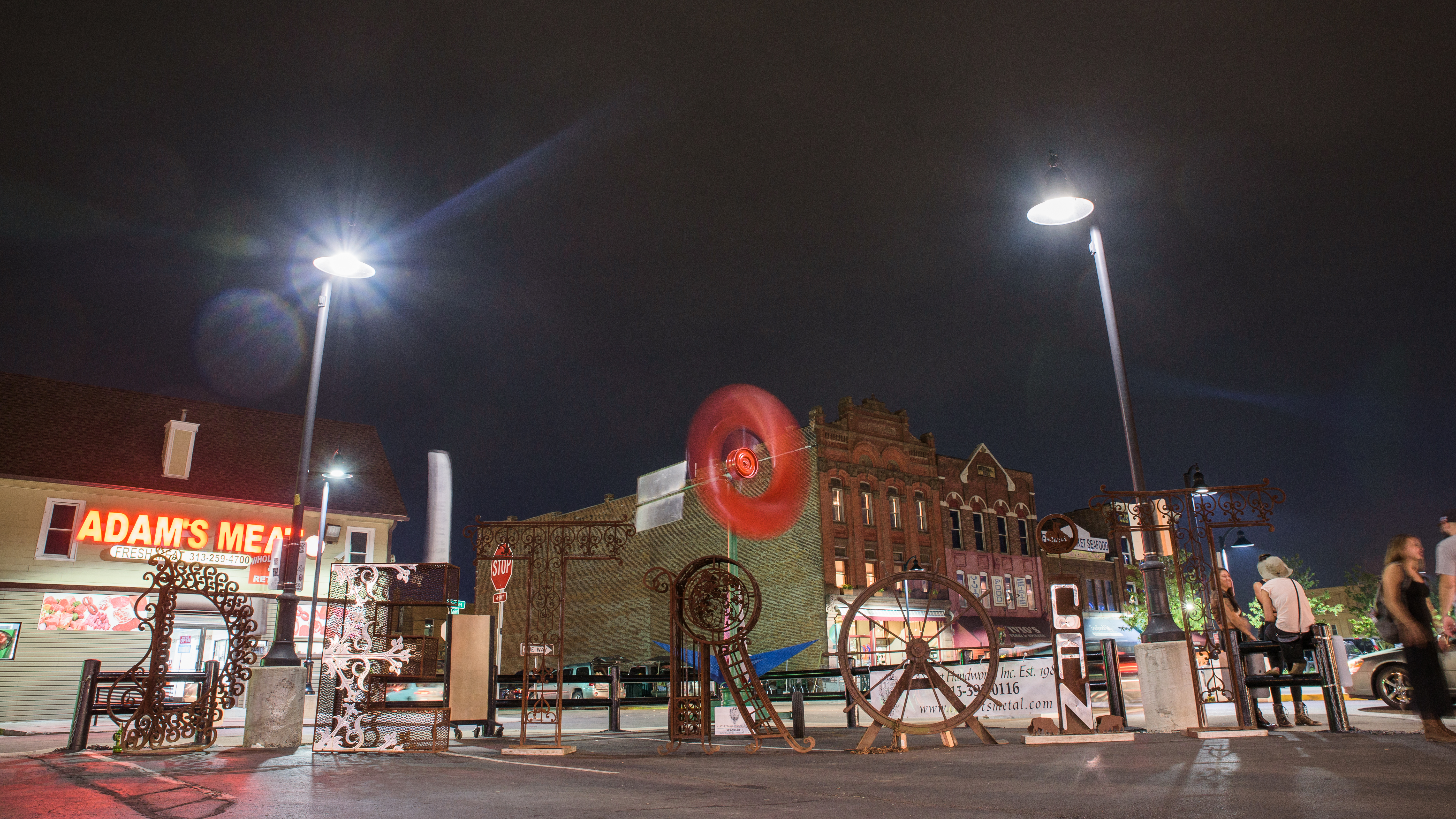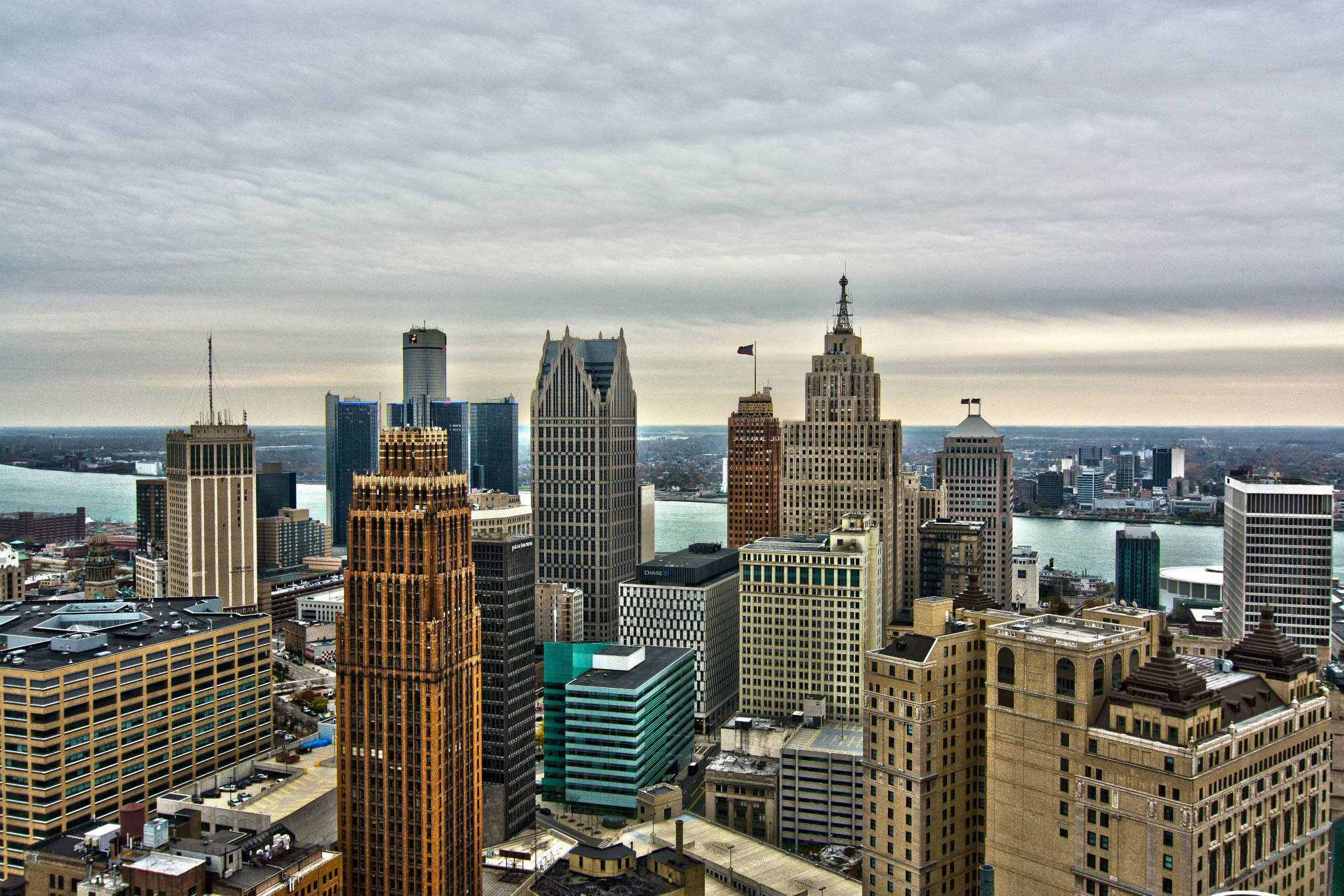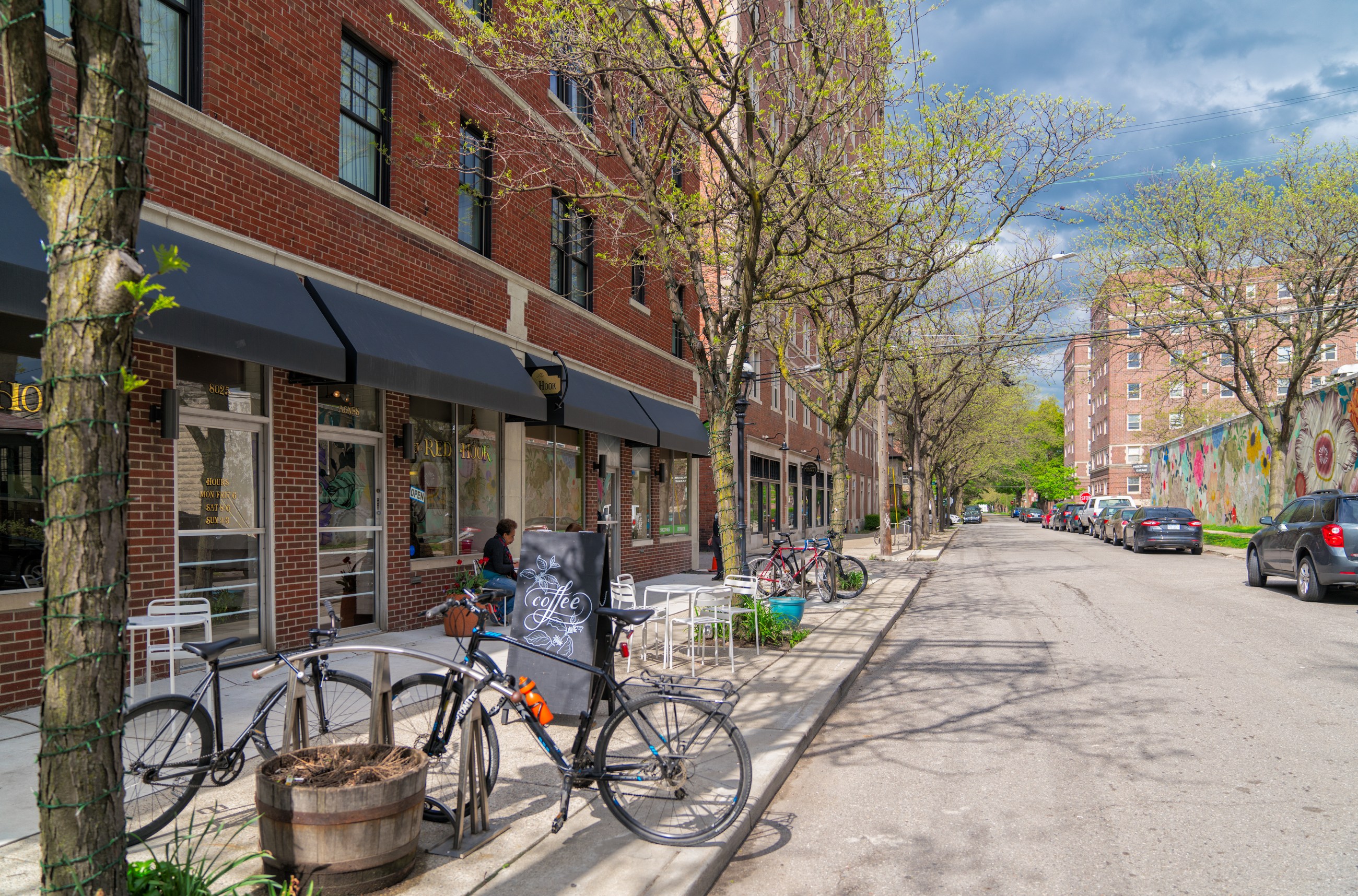
Investing in the future of Detroit: How a nonprofit lender takes a chance on small businesses when banks won’t
The Detroit Development Fund, a Detroit-based small business lender, is releasing a report that highlights lessons in impact investing for community organizations, funders and others.
Four years ago, this block was dark. The streetlights were out and all of the storefronts sat empty. Residents living in apartments above the shops came and went, hoping one day the block would come back to life. But nobody knew when – or if – it would ever happen.
Now, the window of The Red Hook Detroit, a coffee shop and bakery, is a beacon of light. Next door, Detroit Vegan Soul will soon bustle with a lunch crowd. And down the street, the chef at Craft Work is already prepping for dinner service.
Outside Red Hook sits Craft Work owner Hugh Yaro. A cast of neighborhood residents and business owners stops by to chat as he enjoys his morning coffee. It’s a diverse mix—African-American, white gay, straight—and they are all discussing what is coming to the West Village, a small neighborhood on Detroit’s East Side that has been listed on the National Register of Historic Places since 1980.
A few blocks north, a strip of 1930s era commercial buildings that looked ready for the bulldozers are being rehabilitated for retail and residential. A new mixed-use residential project broke ground last fall. And the area is part of a $30 million Strategic Neighborhood Fund that is expected to bring more activity to the streets. The conversation today centers around managing growth and ensuring that neighbors who have called the area home for decades can afford to stay.
But in 2012, when Yaro looked at this block with potential investors and told them about his dream of a neighborhood bistro, they only saw risk. Everyone except the Detroit Development Fund, a nonprofit that provides loans and other assistance to help revitalize the city.
“Restaurants are a big risk and being in the West Village at the time, most people thought it was very risky,” says Yaro, who previously owned restaurants in Detroit’s suburbs. “DDF were really the only people at that time that believed in what I was doing.”
And when Detroit Vegan Soul and the owners of Red Hook needed capital to open their shops on the block, Yaro recommended DDF.
“At the time, everyone knew DDF was the only game in town,” he says. “I heard about them through a friend. You couldn’t get a small business off the ground in Detroit without them.”
DDF could make those loans thanks to a $550,000 grant from Knight and New Economy Initiative, a special project of the Community Foundation for Southeast Michigan.
“I asked them to let us pilot a place-based retail strategy,” says Ray Waters, president of the Detroit Development Fund. “We went to the community and asked them what they wanted. They said, ‘We want a coffee shop.’ Three years later, it’s turned into a retail hub.”
R
-
Community Impact / Report
-
Community Impact / Press Release
Uplifting entrepreneurs
DDF wasn’t just focused on retail businesses. They sought to assist entrepreneurs in any industry that had solid business ideas but couldn’t find lending because they were considered uncreditworthy by large financial institutions.
“One of the challenges in this market isn’t just capital as much as making sure that companies are ready for a loan,” Waters said. “Many don’t have financial statements; some don’t know how to approach a lender. We knew we’d have to help get them ready.”
That was the case for Vickie Lewis. In 2009, she approached DDF for a $100,000 loan to buy out her partner. Banks weren’t interested in helping her as their waste and recycling firm had revenues of just $700,000. But DDF stepped in and not only wrote the loan but helped her develop a more robust business plan and develop a growth strategy. Now Lewis employees 30 Detroiters and shows $7 million in revenue.
“And today, she’s moved her business to Fifth Third Bank; they took over her loan,” says Waters. “That’s what we call success.”
In total, Detroit Development Fund has made $43 million in loans and created or retained an estimated 2,500 jobs since it was founded in 1996. As of October 2016, the average loan size was $78,000 and more than half have gone to women and minorities. And despite assisting entrepreneurs ignored by larger financial institutions, its charge-off rate is less than 4 percent.
“DDF is a very quiet actor in Detroit,” said Katy Locker, Knight program director for Detroit. “This kind of philanthropic support isn’t grabbing headlines but it allows the economic revitalization to happen. When you look at the projects that are small business, small physical revitalization projects, particularly housing, DDF is quietly in most of those deals. They are working with incredible intention to ensure that their lending reflects their community.”
A chance for growth
But in 2014, DDF’s ability to continue to grow was threatened.
The market for small business credit remained extremely tight and demand for their services was high. Its net assets had deteriorated to just $3.2 million while its liabilities – the money it borrowed to lend to business owners like Yaro and Lewis – increased to $12.9 million. That sent its leverage ratio climbing to 4.1 by early 2015. Typically, a leverage ratio greater than 2 is considered unhealthy.
To make matters worse, a $2.5 million loan from the Knight Foundation was about to come due. Waters had the assets to begin repayment, but he knew DDF couldn’t grow or attract new capital with the existing balance sheet.
Meanwhile, Detroit’s small businesses were still in desperate need of capital if the city’s nascent growth was to continue. In fact, the Federal Reserve Bank of Chicago found in 2014 that “perhaps nowhere is the need for business development, financing and community revitalization more pronounced than in the city of Detroit.”
Locker proposed converting Knight Foundation’s $2.5 million loan into a grant over three years. The foundation believed the conversion would shore up DDF’s balance sheet attract new investment and diversify its investor base.
“There was an opportunity for DDF to expand its operations and be a part of rebuilding Detroit,” Locker said. “But without the conversion they wouldn’t be able to grow because their net assets weren’t strong enough to encourage others to join.”
And so, in August 2015, Knight Foundation converted the loan into an equity grant. That “immediately halted” the downward trends, according to Aeris, an investor-services firm hired by Knight to study the effects of the conversion.
By the end of the second quarter 2016, total net assets had stabilized and lending was on pace for record highs. As of October 2016, DDF had closed 57 loans, worth $4.4 million, for the year – up from 37 in 2015, which was also a record.
Already DDF has attracted $10.8 million in new investment, including $6.5 million from J.P. Morgan Chase & Co. and the W.K. Kellogg Foundation to create an Entrepreneurs of Color Fund. That is in addition to the $10 million already committed by Goldman Sachs and Huntington Bank to be used for small business development and microlending, respectively.
“I don’t like to think about what would have happened if we didn’t convert,” Waters said. “The Huntington program would not have happened, at least at that size. I believe it would have been a difficult sell for Kellogg to come in with the $3 million PRI for the Entrepreneurs of Color Fund. We would not have $3.5 million from Chase, either. Strengthening our balance sheet really gave us a boost to go out and get more deals.”
Balancing challenges and opportunities
The challenge now for Waters and DDF is to accelerate the growth while managing the back end and remaining relevant.
“There is a more robust marketplace in Detroit than they’ve seen in most of their 20-year history,” Locker said. “So where is the niche of work that they can be most impactful in and how do they stay focused on that and recognize where they should grow and where they should get out of some businesses and into others?”
Still, Waters says he is inspired by the challenges and doesn’t see a diminishing need for an alternative lender like DDF in Detroit.
“So many of these companies aren’t ready for a bank loan,” he said. “That’s not going to change. With more businesses coming in and more neighborhoods growing, there will still be a need for gap financing.”
Sandi Bache Heaselgrave remembers the many months she waited to open Red Hook. Some weeks, she’d nearly given up. But now, as she arrives each morning before dawn, the trees twinkling, she sees what DDF was investing in. Her, yes, but also the block, the neighborhood and the people of Detroit.
“None of this could have happened without DDF,” Yaro says, as Bache Heaselgrave sits down next to him with a cup of tea.
To everyone passing by, it’s just another morning. They are unaware of a tiny community development financial institution and what it took to make this one block in this one city come alive again.
Amy Haimerl is a Detroit-based author and journalist. Read more at amyhaimerl.com, and follow her on Twitter @haimerlad.
r
-
Community Impact / Report
-
Community Impact / Press Release
-
Community Impact / Article
-
Community Impact / Article
-
-
Community Impact / Article
-
Community Impact / Article
Recent Content
-
Community Impactarticle ·
-
Community Impactarticle ·
-
Community Impactarticle ·
